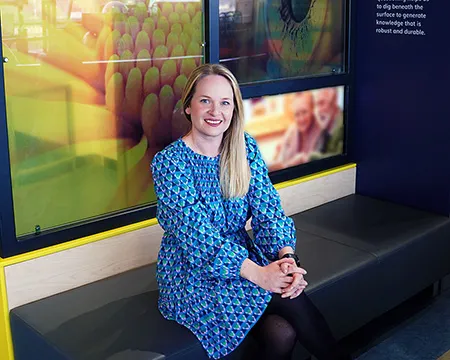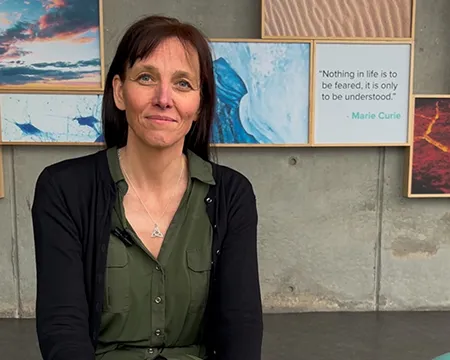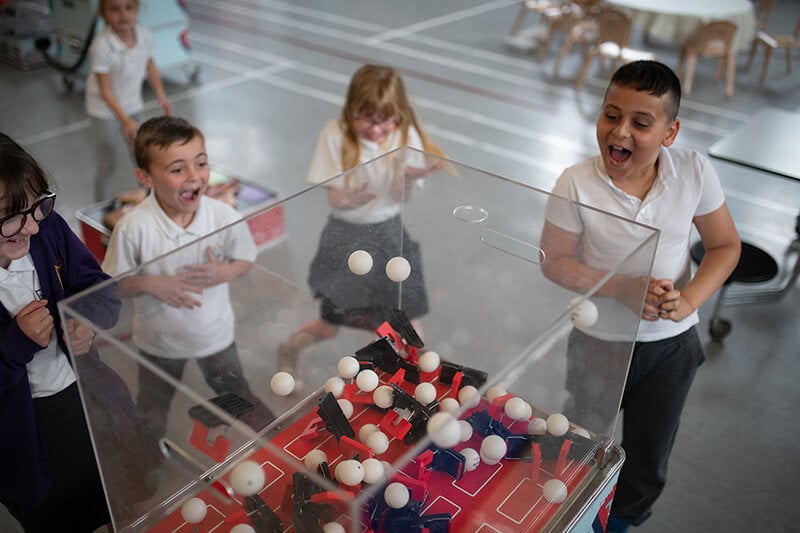Operation Broken Feather

You might be surprised to see or hear birds around the science centre, but we're thrilled that they are becoming an ever more common sight at Pacific Quay. Recently, we've been fortunate to have swans, ducks and herons making the most of our floating wetlands.
The RSPB's Louise Muir (Argyll Corncrake Conservation Advisor) authors this month's guest blog post to celebrate the launch of a new exhibition about an elusive bird, and some tips for spotting the more common winged friends that you're likely to find in our outdoor spaces...
The Royal Society for the Protection of Birds (RSPB) is heading to Glasgow Science Centre! Our ‘Operation Broken Feather’ exhibition will be on display from the 29th May until 21st July. The interactive exhibition has been designed by high school students across Scotland and visitors are asked to help ‘Agent Corncrake’ to crack the ‘Corncrake Conservation Code’.
Corncrakes are a rare, secretive, and yet very noisy visitor to Scotland’s West Coast islands. These elusive birds, once widespread across the UK, have seen a decline in numbers in recent decades due to changes in agricultural practices, but conservationists are hopeful that their efforts, alongside volunteers, farmers and crofters, are making a difference for the species. Operation Broken Feather is designed to allow visitors to learn all about corncrakes, wildlife-friendly farming & the rural communities whose way of life allows biodiverse ecosystems to thrive & rare species to survive.
It is unlikely you will spot a Corncrake near the Glasgow Science Centre and even in places they breed you are more likely to hear them ‘crex-crex’ before you see them! However, there are a number of other species you should look out for when visiting the centre and local area. The National Biodiversity Network Atlas reveals that the top 10 birds likely to be seen include; Magpie, Starling, Rock Dove, Blackbird, Black headed Gull, Wood Pigeon, Carrion Crow, Robin, Dunnock and Blue Tit. These should be easy birds for you to spot but how about trying to look for these less common visitors to the area? Take a seat near a window or on a bench outside and start looking out for the following.
Swift
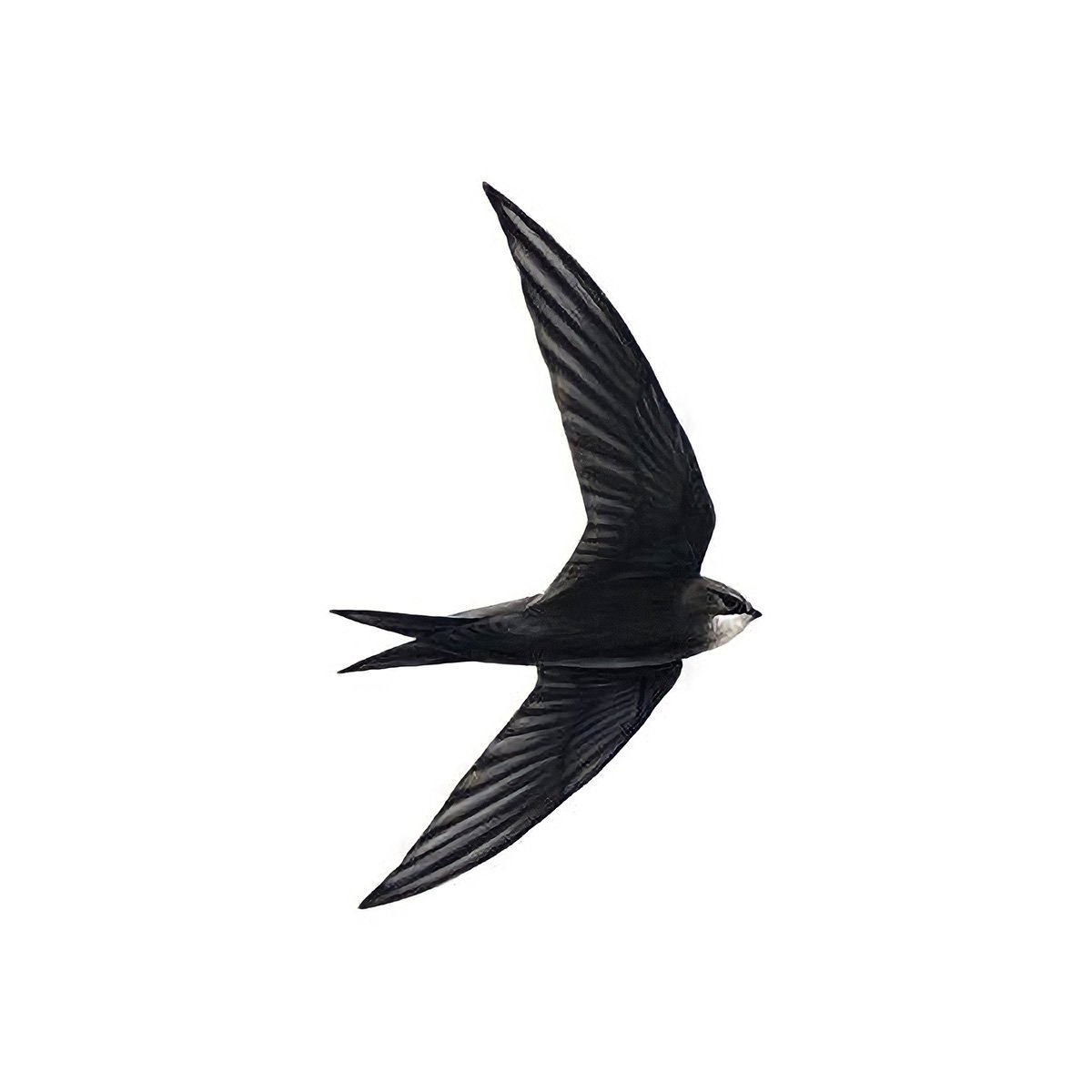
Swifts are summer visitors, breeding across the UK, but migrating 3400 miles away to Africa in our winter. Swifts are a medium-sized aerial bird, which is a superb flyer. Sleeping, eating, bathing and even mating on the wing (while flying). They are also the fastest birds in level flight, with an impressive top speed of 69mph. Swifts are plain sooty brown, with a white throat, but in flight against the sky they appear black. They have curved wings and a forked tail.
Kestrel

Kestrels are typically seen hovering with their pointed wings held out. Males have a grey head and tail, a red-brown back and a cream underside. Females are similar, but more of a uniform brown back. The Kestrel is a little larger than a Feral Pigeon and can be found in all kinds of habitats, from open countryside to towns and villages. Their diet consists of small mammals and birds, worms and insects.
Common Gulls
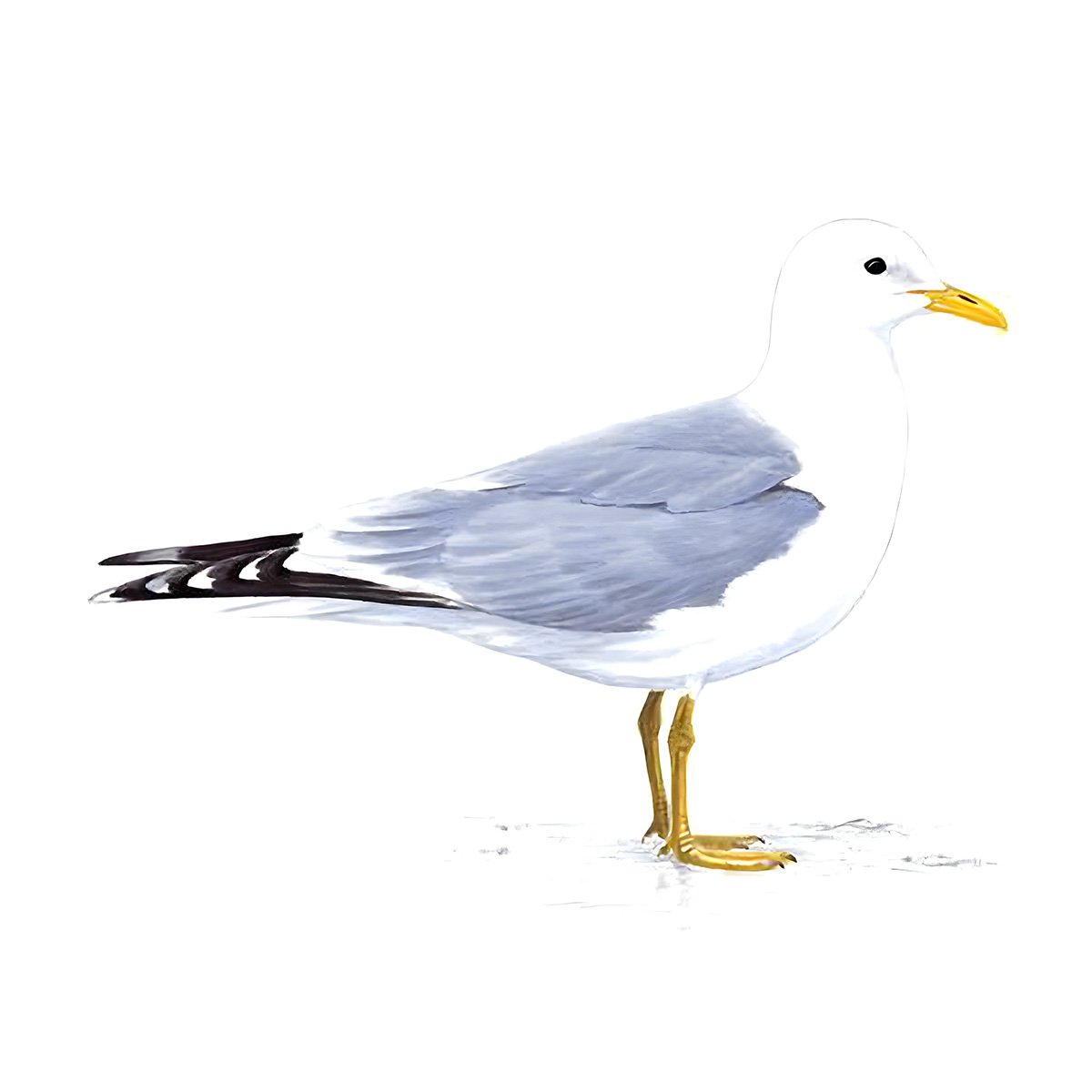
Identifying the different kinds of gulls you can see in Glasgow can be tricky but the Common Gull is one of the smaller gulls. It has greenish legs and a yellow bill and its body is silvery-grey above and white below. It has a white head (streaky during the winter) and black wingtips. Despite its name, it is not at all common!
Chiffchaff
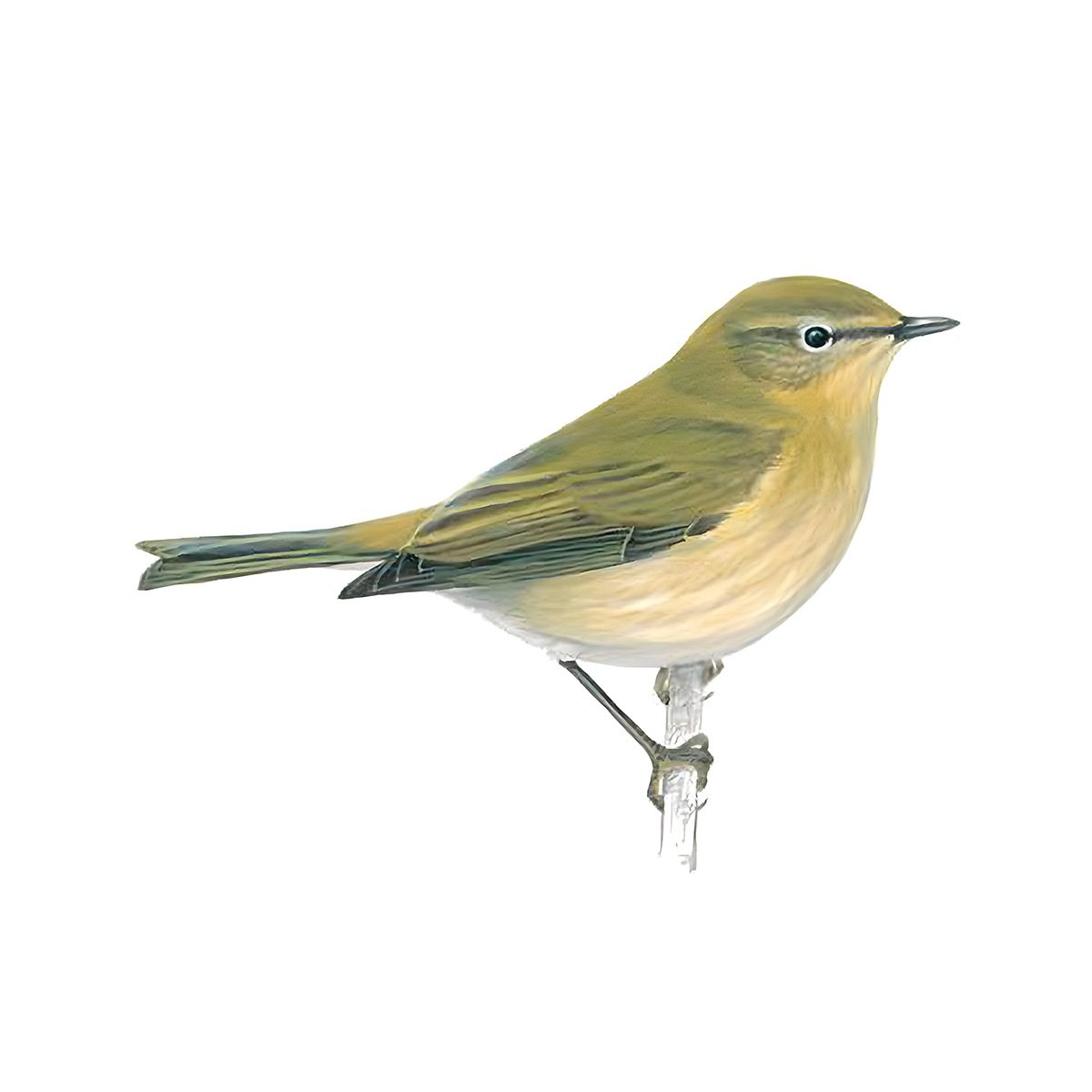
The Chiffchaff is a small olive-brown warbler which flits through trees and shrubs, with a distinctive tail-wagging movement. Chiffchaffs usually have dark legs and a pale eye stripe. They're easily confused for the Willow Warbler which has pale legs and a yellow eye stripe. Listen for the song which gives it its name, no other warbler makes that chiff-chaffing tune. Chiffchaffs eat insects, either picking them out from trees or snapping them up in flight.
Cormorant

The Cormorant is a large, black waterbird whose size and colour make it very visible. With a reptilian neck, it has an almost prehistoric appearance. They can often be spotted perched on a rock or bank with its wings held out to dry. They feed on fish, which they catch with their long, hook-tipped bills while swimming underwater.
Moorhen
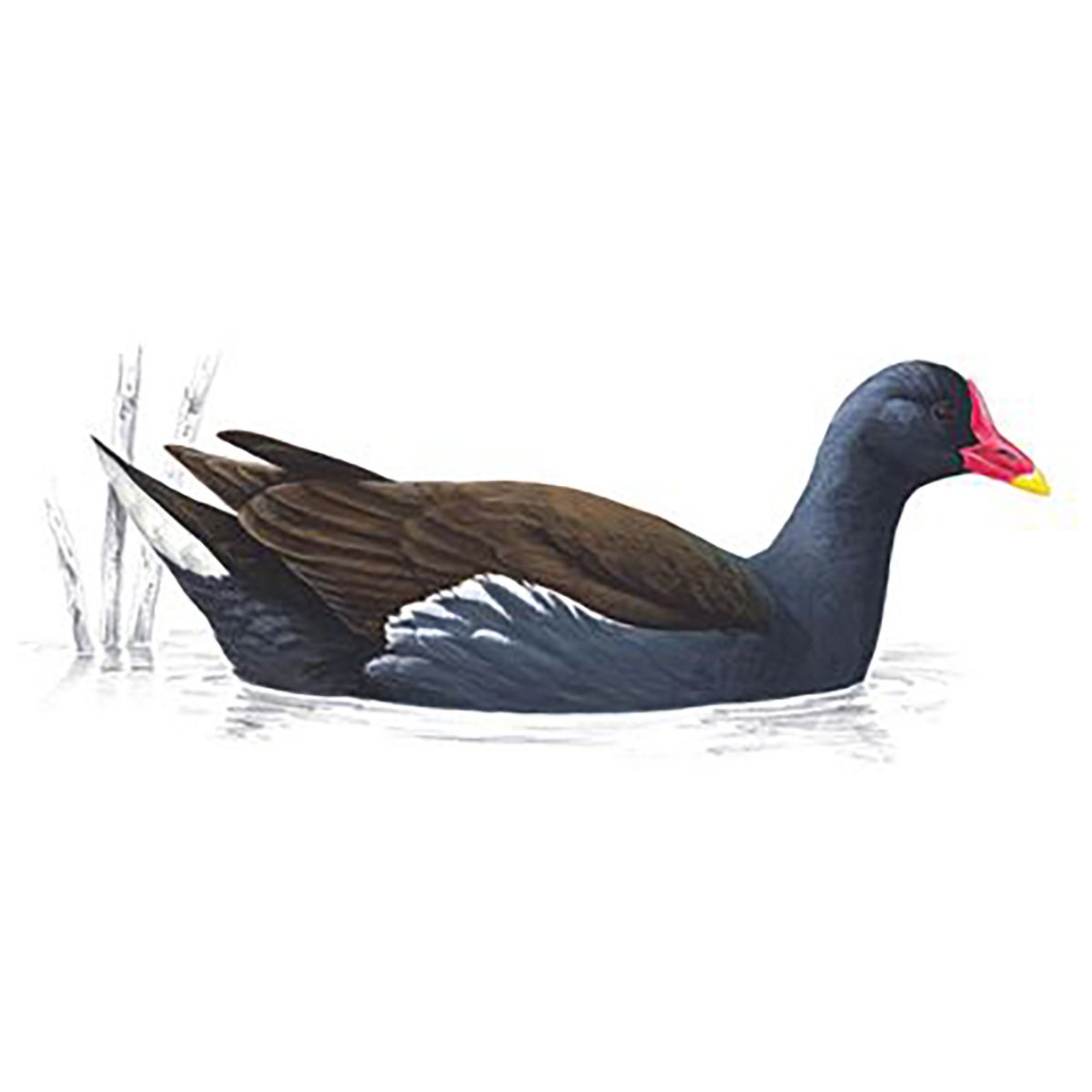
Moorhens are blackish with a red and yellow beak and green legs. Seen closer up, they have a dark brown back and wings and a more bluish-black belly. Look out for the white line across it body as this distinguishes it from the similar-looking bird the Coot. It is often seen on park lakes, ponds and rivers. Moorhens are omnivores, eating everything from snails and insects to small fish and berries.
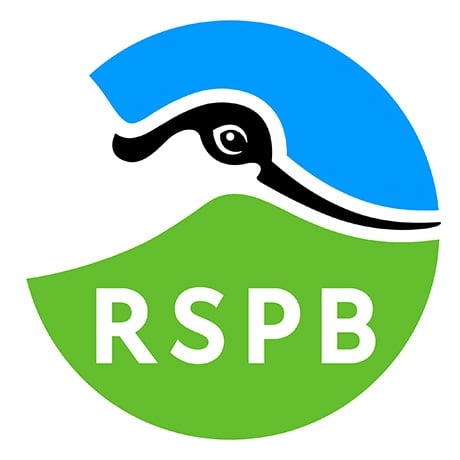
Header Image - A Corncrake calls. Credit: Cliff Reddick. All other images of birds used are provided with our thanks by RSPB.
Useful links:
Search for a local RSPB group
Observing and identifying birds can be a relaxing and rewarding experience and if you would like to connect with wildlife, make new friends, and help us save nature please contact one of the local RSPB groups. You can get as involved as much as you’d like – whether you stop by for a natter about nature or lead a session. Please see link below to search for a local group.


